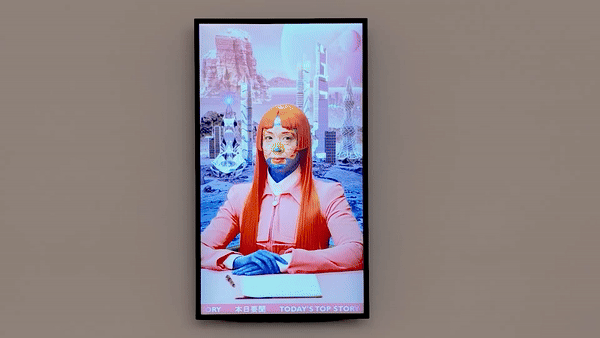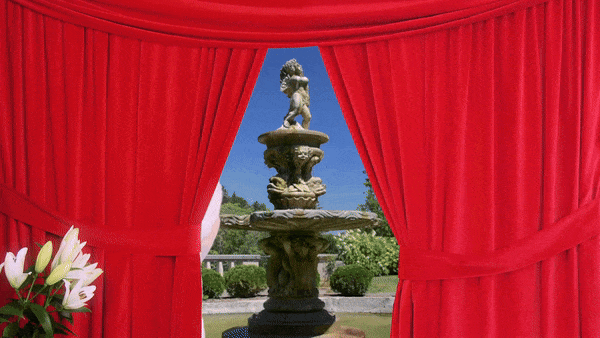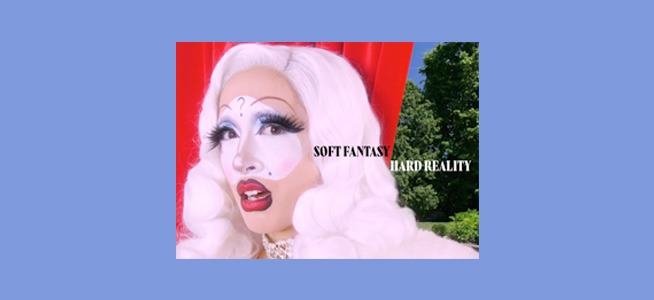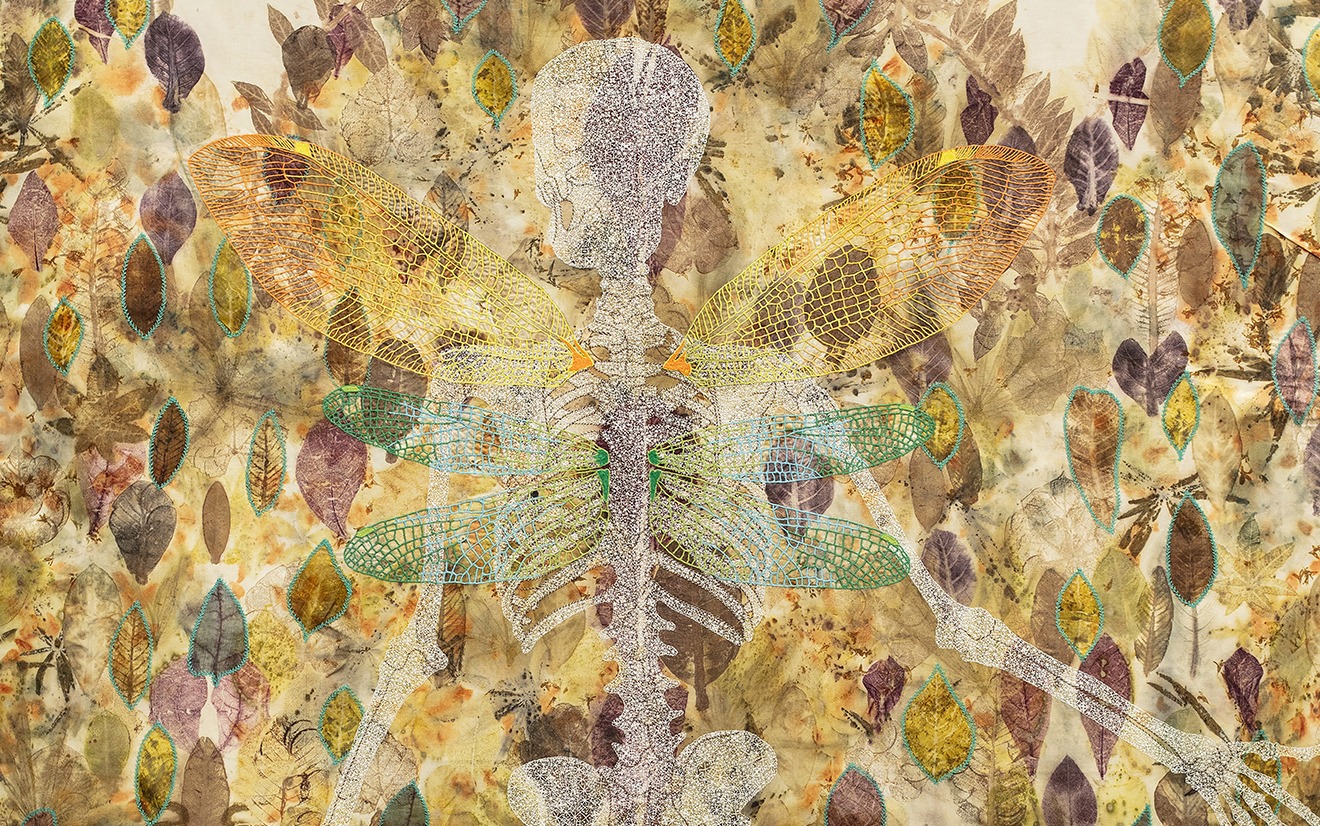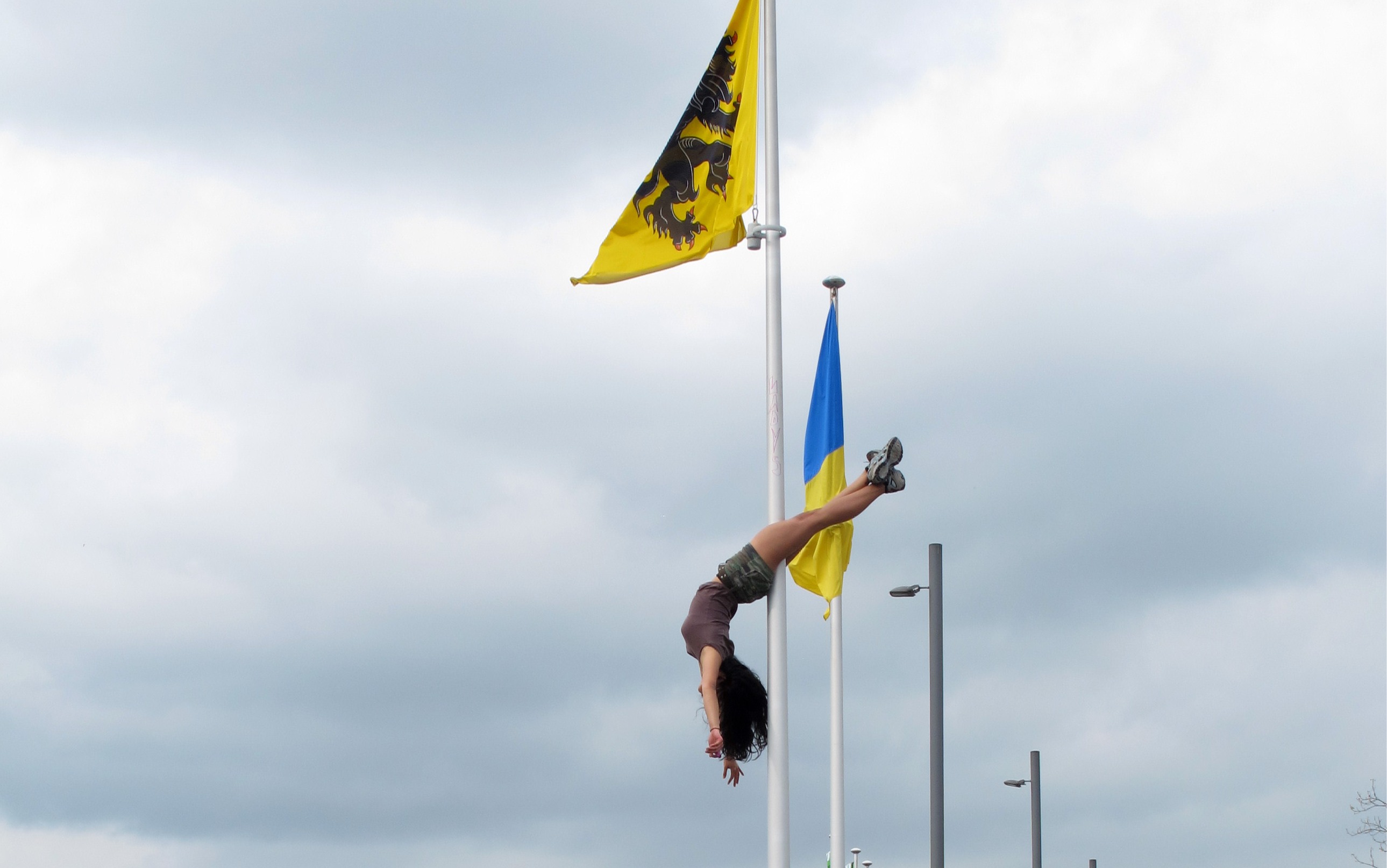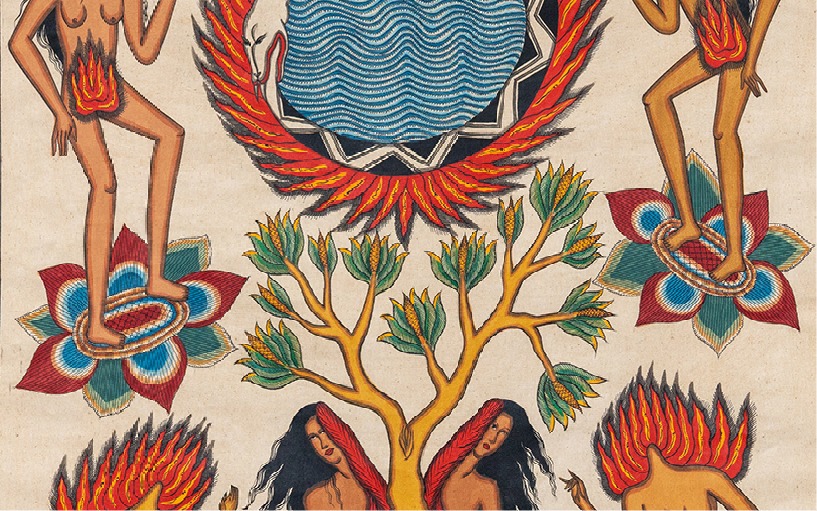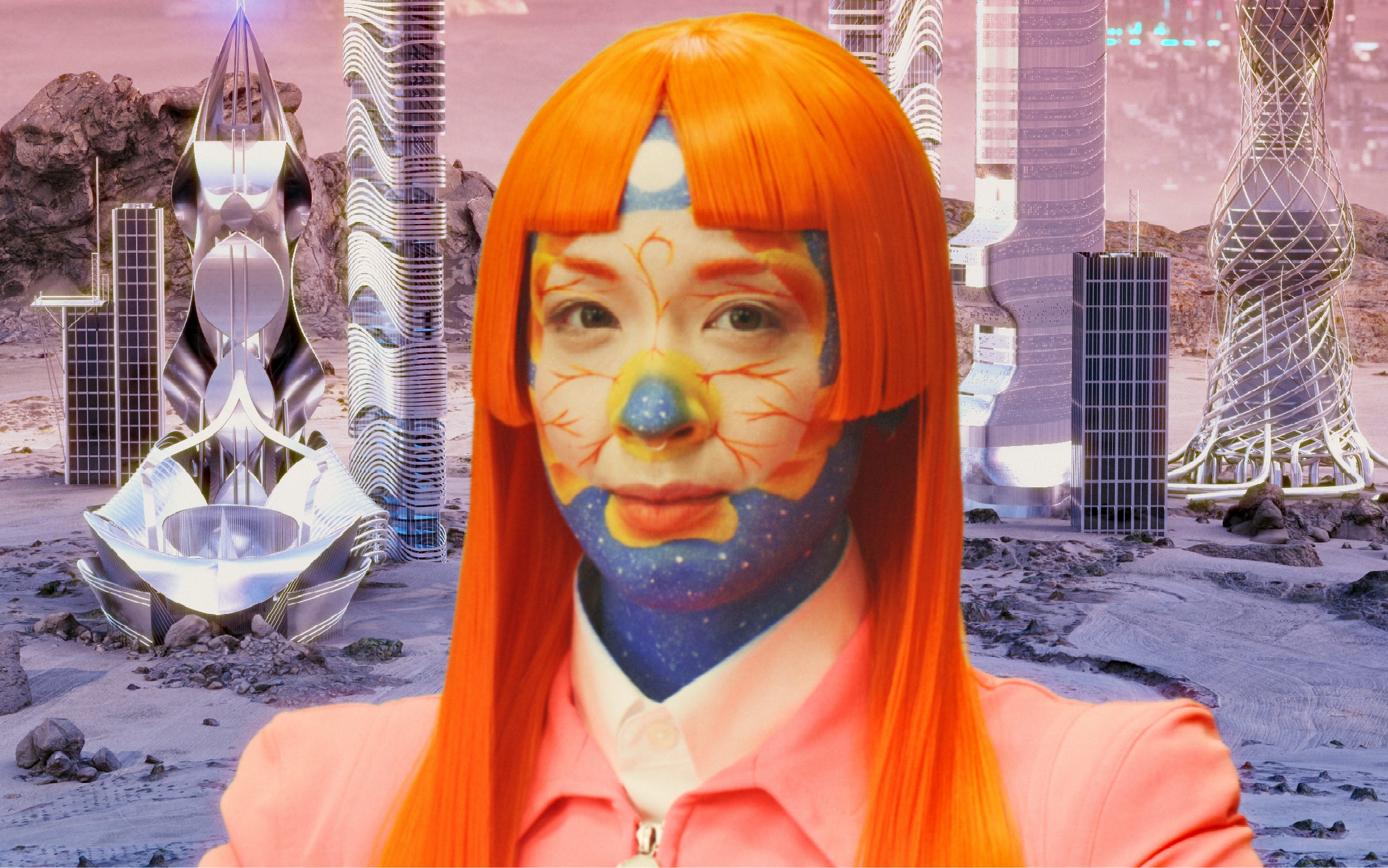
About
Soft Fantasy / Hard Reality starts out with an initial set of binaries: softness and hardness, fantasy and reality. This set of relations can be extended to its cognates: immateriality / materiality, fictive / factual, or even concept / form. These binaries structure categories and value-systems, structure our encounter with the world at large. Soft Fantasy / Hard Reality interrogates these binaries and attempts to loosen the hold of these categories in our encounters with matter and milieu.
Presenting a roster of artists who work across a variety of practices, media, and forms: from painting to sculpture, installation, moving image, and performance, the exhibition attends to the ways in which artists mediate this initial binary, working through the certainty of its polar distinction and proffering instead a more open-ended encounter with, on one hand, what may be considered “soft fantasy” and “hard reality” and, on the other, what may be found in between, alongside, or in the wake of unsettling these categories through the performative, the archival, or the mythological.
The titular typographic slant offers a framework to map out these mediations. On the one hand, it cleaves the two phrases, creating distinction between them. On the other, it stages the juxtaposition between them, coalescing the separate categories into a network of differential relations. Soft Fantasy / Hard Reality leans into this rhetorical slippage which leads us from the binary structure to these categories’ troubling, or else misrecognition. The exhibition itself flags the preciousness and precariousness of this juxtaposition and in its place offers ways in which the hardness of reality becomes fugitive trace or the softness of fantasy constitutes uncompromising matter. The exhibition, in this sense, is a study of these displacements–or how reality and fantasy become both soft and hard, concept and form.
Tosh Basco’s works play out one moment in this series of displacements. Basco uses her body as the very means of mark-making. Pigment is made to cling onto skin after which the body is made to take on a choreography of impression: the body presses against paper or canvas, which then registers every surface and crevice, renders visible composition and contingency. In this process, the figure dissipates into abstraction, into the sheerness of gesture. In this process, Basco’s artistic prospects shuttle from the undeniable materiality of the body to the flimsy swatches of color that it leaves behind.
Eisa Jocson’s performative practice also operates within the framework of the bodily as material. In Stainless Borders: Deconstructing Architectures of Control (2010), Jocson presents a video work documenting how she uses her body to transform fixtures associated with disciplining bodies, delimiting space, and determining mobility–handrails, sign posts, gates–into choreographic apparatuses. For the artist: “Unaware that our bodies are dictated by these architectures of control around us, we move monotonously, efficiently and mechanically in the urban landscape. These industrial structures control and manipulate human traffic and individual movement.” Mounting and scaling such urban fixtures, Jocson animates them as part of a choreographic environment, as mise-en-scene as stagecraft as prop. She further explains: “The body in pole dancing is challenged to go beyond its horizontal orientation towards possibilities of moving and expressing in a vertical plane using the pole as its apparatus. This movement construction enables and empowers the body to move creatively in a vertical dimension. The movement vocabulary of pole dancing is continually being constructed and reconstructed under different contexts.”
Organic and industrial materials assemble into surreal semblances in Yasue Maetake’s practice. Nominating her practice as “animist,” Maetake collects various things: animal bones, seashells, fibers, resin, and metals, alluding to a vaster lifeworld that involves not only these objects’ production and circulation, but also “a direct continuation of life cycle events composed of raw and natural materials.” For Soft Fantasy / Hard Reality, Maetake presents a series of assemblages made in 2020 (Lineal Fetishism II and Symbolic Atmosphere VI) and a new work made in 2024 (Phoenix Natus). In these works, artifact becomes animate material and assumes a will to form that convenes discrete things that mingle and merge, attaching or anchoring themselves to a makeshift sculptural body. What comes to being is part sculptural object, part scaffold for debris and detritus to find structure, propose form.
Cosmology and mythology inform Citra Sasmita’s Song of Divine Realm (2024). The work is part of Sasmita’s ongoing interest in reframing the place of women in Balinese society. Appropriating traditional Kamasan painterly idioms, Sasmita creates scroll paintings that are populated by goddesses and female spirits. These compositions decisively deviate from its traditional counterparts, foregrounding the stories of marginalized women. The scroll form alludes to how different relations are structured in Hindu and Balinese culture: vertical forms reference the relationship between deities and mortals, while horizontal forms speak to how we relate to each other and to other forms of life. Using the same form, Sasmita depicts a genealogy and a horizon of matrilineal relations. This is an act of recovery and rehabilitation using the very same conventions of male-dominated artistic narrations.
A comparable impulse of reframing the mythical can be seen in Geraldine Javier’s textile works. Fabric becomes not only figurative ground but also a surface for stain and a piece of cloth for materials, such as shoe tacks, safety pins, and appliqué, to latch onto. Floral and plant motifs simultaneously constitute the background or obscure the foreground of Javier’s textiles. These create the effect of a flattened picture plane within and on which the figurative and the decorative meet and interface. For the exhibition, Javier presents a reworking of the story of Malakas and Maganda [The Strong One and The Beautiful One], an ur text that was instrumentalized to imbue mythical qualities to the conjugal dictatorship of Ferdinand and Imelda Marcos. Focusing on figures who have selflessly offered themselves during the pandemic, Javier recovers the politico-ethical exceptionalism that inheres in the figures of both Malakas and Maganda. In Amerika (2024), Javier paints a portrait of Pauline Van Senus, Seattle’s transit fairy who voluntarily cleaned and beautified bus stops all over the city. In Pilipinas (2024), the artist features Patricia Non, who during the pandemic started community pantries that made different kinds of necessities accessible to people in Quezon City, inspiring others to start their own community pantries in different parts of the archipelago. Both textile works are flanked by spiky metal rod ornaments, creating a shrine or an altar. The spike ornaments act as “sentinels or guards, and also speak to the personal sacrifices of the two women in a time of a global pandemic.”
In Ming Wong’s Bloody Marys - Song of the South Seas (2018-2024), the fictive worlding of cinema, theater, and song draw out concrete materialities that foreground the intricate interweavings of postcolonial imagination, its pragmatic politics, and the cultural actors that embody and live through these global political histories. The Pacific, at once an imagined tropical milieu and a historical war frontier, takes prominence in this worlding. Wong’s work for the exhibition presents the artist’s archive of cinema and theater ephemera, particularly relating to the musical and later film South Pacific, a story of an American military officer's life in the Pacific. This is a trove that includes archival materials about the Black female actors who played the character Bloody Mary, a Pacific islander woman, in the musical and film. Juanita Hall, American musical and film artist who played Bloody Mary for both its stage and screen versions is an important node in this work. Actors like Hall present a kind of racial ambiguity that proved instrumental in the framework of American cultural production about the tropics, particularly in relation to the US-colonial project of “benevolent assimilation.” This discloses an indiscriminate logic of Otherness in which actors of different racial profiles were cast interchangeably. Wong extends the scope of this particular condition by including materials that allude to the Pacific as motif and milieu of Otherness, like Mexican artist Miguel Covarrubias’s illustration People’s Pacific, an iconic image in the long history of stereotypical depictions of the tropical Other.
Developed during the pandemic, Sin Kai Win’s Irreconcilable Differences offers the same interest in the theatrical and the performative. Against an ornate virtual background, two female-presenting characters converse. The exchange is largely pre-linguistic: vocalizations, repetitive sounds, a lot of babbling. The entire performance is a theater of body language and facial expression, a chorus of monosyllabic snide remarks, shifting from nonchalant to dismissive, bored to offended. A binary between old hollywood glam and modern oriental is staged through the sartorial choices of the two characters. This is a binary that is subtly undermined by other visual elements in the video: the monochromatic dress and hair code and comparable maquillage stage a much considerable similarity than it does difference. The video offers no resolution nor any stark dichotomy. The virtual space simulates a fairly even exchange, and we are held captive in this speculative scenario where irreconcilability becomes an inflection of voice or a gesture easily overlooked: a wave of a hand, a flicker of a fan, aggressive licking of lips or puckering of mouth, closing up on made up faces, a voluptuous synthetic breastplate.
The works for Soft Fantasy / Hard Reality disclose how tenuous these dichotomies are. Through performative, archival, and mythological artistic strategies and tendencies, distinctions are rendered contingent, in flux, and in this exhibition: hard and soft, fantasy and reality–these categories continuously morph, inchoately shifting into diverse potentialities.
– Carlos Quijon, Jr.
Tosh Basco she/her (b. 1988, California, US; lives and works in Zurich, Switzerland) was born in California and rose to prominence in the drag scene in San Francisco in the 2010s. Well known for her movement-based performances under the name boychild, Basco’s photography and drawing accompany the performance practice. Viewed as a whole, Basco’s work attempts to enfold language, becoming, and representation together in spaces where they are presumed to exist as discrete entities.
She is co-founder of the collaborative entity Moved by the Motion with Wu Tsang, and collaboration remains a vital aspect of her work. Basco’s solo exhibitions include No Sky, Rockbund Art Museum, Shanghai, China (2023); Grief Series, Karma International, Zürich, Switzerland (2021); Portraits, Still Lifes and Flowers, Carlos/ Ishikawa, London, United Kingdom (2021); Angels, Hand Dances and Prayers, Company Gallery, New York, NY (2021); Hand dances. 1,000 caresses., Carlos/ Ishikawa, London, United Kingdom (2019). Basco’s work has also been presented at the Venice Biennale; the Sydney Biennial; The Whitney Museum of American Art, New York; the Museum of Contemporary Art, Chicago; MOCA, Los Angeles; and ICA London, among other institutions.
Geraldine Javier she/her (b. 1970, Makati City, Philippines; lives and works in Batangas, Philippines) is one of the Philippines’ most important and collected contemporary artists. With a Nursing degree from the University of the Philippines that included a top rank in the licensure exams, she took a second university degree in Fine Arts, and pursued an art practice. Since 1995, she has held more than 30 solo exhibitions in the Philippines, Malaysia, South Korea, Singapore, Germany, and China. From 1999 to 2003 she was a member of the Surrounded by Water collective.
Much of her early work was in collage form but it was with paintings that she established her reputation as an inventive artist. These were characterized by either melancholy or wit: death and childhood were frequent subject matters. By 2008, she was making fabric works with the paintings and combining them in installations; exhibitions were a mixture of paintings, installations, and objects. Paintings would often have collaged elements, notably preserved beetles and butterflies. In 2013, she moved south from Manila to the countryside in the district of Batangas. Her work increasingly dealt with our relationship with nature. Current projects often involve the participation of the women in the community where she lives. In 2019, she exhibited at the Havana Biennial. Around this time, she began exploring two new forms of paintings: palimpsestic and encaustic (with use of blowtorch).
Eisa Jocson she/her (b. 1986, Manila, Philippines; lives and works in Manila) is a contemporary choreographer, dancer and artist, her practice exposes body politics in the service and entertainment industry as seen through the unique socio-economic lens of the Philippines. She explores how the body moves and what conditions make it move – be it social mobility or movement out of the Philippines through migrant work. In all her choreographed creations ranging from pole to macho dancing, from hostess to Disney princess studies, capital is the driving force of movement pushing the indentured body into spatial geographies.
Her work has toured extensively in major performing arts festivals, biennials and institutions worldwide, including Tai Kwun Contemporary, Hong Kong (2020); National Museum of Modern and Contemporary Art, Korea, Seoul (2020); Sharjah Biennial, UAE (2019); Taipei Arts Festival (2018, 2019, 2020); Bangkok Biennale, Bangkok, Thailand (2018); Rockbund Art Museum, Shanghai, China (2018); International Performance Art Festival, Copenhagen, Denmark (2018); Asia-Pacific Triennial of Performing Arts, Melbourne (2017); Theatre der Welt, Germany (2014); and Zurich Theater Spektakel, Switzerland (2012, 2013, 2015, 2017). Jocson is the winner of the 2019 HUGO BOSS ASIA ART Award.
Yasue Maetake she/her is a Tokyo-born artist living and working in New York City. Her work has been exhibited at numerous national and international institutions such as Espacio 1414 at the Berezdivin Collection, San Juan, Puerto Rico; Queens Art Museum, New York; 10th Sonsbeek, Arnhem, Netherlands; and ASU Art Museum, Arizona, amongst others. Solo exhibitions include Fons Welters, Amsterdam, The Chimney, New York, Microscope, New York, and Nina Johnson, Miami, and others.
Maetake’s work has been featured in Sculpture Magazine and reviewed in Artforum, The New York Times, ArtAsiaPacific, FlashArt, amongst others. Maetake was named one of “20 international women advancing the field of sculpture” by Artsy, is a recipient of the NYFA Fellowship in Sculpture, and she also completed a residency in the studio of El Anatsui in Ghana sponsored by a research grant from the Agency for Cultural Affairs of Japan. In summer 2024, Maetake’s essay centered on Eva Hesse will be published in Transatlantique Collection, Paris. Yasue Maetake earned her MFA from Columbia University in New York.
Citra Sasmita she/her (b. 1990, Bali; lives and works in Bali) is a contemporary artist from Bali whose work focuses on unraveling the myths and misconceptions of Balinese art and culture. She is also deeply invested in questioning a woman’s place in the social hierarchy and seeks to upend the normative construct of gender. One of her long term projects, Timur Merah Project; Harbor of Restless Spirits was presented in Garden of Six Seasons, Para Site Hong Kong—a painting on cow’s hide reflects the Kamasan Balinese painterly language that Citra has been developing in her practice. It represents a geography of female figures, fires, and various natural elements, composed whimsically in an unfolding of pansexual energy. While rooted in mythological thinking with specific Hindu and Balinese references, the scenes are equally part of the contemporary process of imagining a secular and empowered mythology for a post-patriarchal future.
Citra was a Gold Award Winner UOB Painting of The Year 2017. She was included in Biennale Yogyakarta 2019 and her solo show titled Ode To The Sun was held at Yeo Workshop, Gillman Barracks Singapore in 2020. She was also included in Garden Of Six Seasons, a notable exhibition presented by Para Site Hong Kong.
Sin Wai Kin they/them (b. 1991, Toronto, CA) brings fantasy to life through storytelling in moving image, performance, writing, and print. Drawing on experiences of existing between binary categories, their work realizes alternate worlds to describe lived experiences of desire, identification and consciousness.
The artist was the recipient of the 24th Baloise Art Prize at Art Basel 2023 for their film series Portraits (2023). Their film, A Dream of Wholeness in Parts (2021) was nominated for the 2022 Turner Prize, and included in the touring exhibition the British Art Show 9, as well as being screened at the British Film Institute’s 65th London Film Festival. Upcoming solo exhibitions include MUDAM, Luxembourg (2024); Accelerator, Stockholm (2024). Recent solo exhibitions include Buffalo AKG Art Museum, New York (2024); Berkeley Art Museum & Pacific Film Archive, Berkeley (2023); Soft Opening, London (2023); Dreaming the End at Fondazione Memmo, Rome (2023); A Dream of Wholeness in Parts at Soft Opening, London (2022); It’s Always You at Blindspot Gallery, Hong Kong (2021); She’s Hopeful (2018) at Soft Opening, London (2020); Narrative Reflections on Looking at Museum of Contemporary Art, Zagreb (2020) and Indifferent Idols at Taipei Contemporary Art Centre, Taipei (2018).
Group exhibitions include Greater Toronto Art (GTA24) at The Museum of Contemporary Art, Toronto; a collaborative presentation with Rainbow Chan at Cement Fondu, Paddington (forthcoming, 2024); CUTE at Somerset House, London (2024); After Laughter Comes Tears at Mudam, Luxembourg (2023); MYTH MAKERS — SPECTROSYNTHESIS III, Taikwun, Hong Kong (2022); Drawing Attention at The British Museum, London (2022). Sin’s work is held in the collections of The British Museum Prints & Drawings; White Rabbit Gallery, Sydney; Ferens Art Gallery, Hull; The Ingram Collection of Modern British Art, UK; Buffalo AKG Art Museum, Buffalo; Sunpride Foundation, Hong Kong and M+ Museum, Hong Kong.
Ming Wong’s he/him (b. 1971, Singapore; lives and works in Berlin) interdisciplinary practice incorporating performance, video and installation unravels ideas of ‘authenticity’ and the ‘other’ with reference to the act of human performativity. In recent years, he has had strong theatrical interests in the intersection of sci-fi and traditional Chinese culture, particularly Cantonese opera. Wong uses this speculative association to tackle issues such as Chinese modernity, the role of popular culture in building national identities. His works often assemble languages and personalities to create their own “World Cinema.”
Solo shows include Next Year in Marienbad, Passerelle Centre d’art contemporain, Brest, France; Notes Toward A Chinese Science Fiction Opera, Chinese University of Hong Kong; Next Year / L’Année Prochaine, Ullens Center of Contemporary Art, Beijing, China; Bülent Wongsoy: Biji Diva!, carlier | gebauer, Berlin, Germany; Travaux domestiques, Centre d’art Neuchâtel, Neuchâtel, Switzerland; Me in Me, Shiseido Gallery, Tokyo, Japan; Ming Wong: Making Chinatown, REDCAT, Los Angeles, US, among many others. Wong participated in Performa 11 in New York (2011) and Life of Imitation, Singapore Pavilion at the 53rd Venice Biennale, Italy (2009).
Installation Views
Geraldine Javier
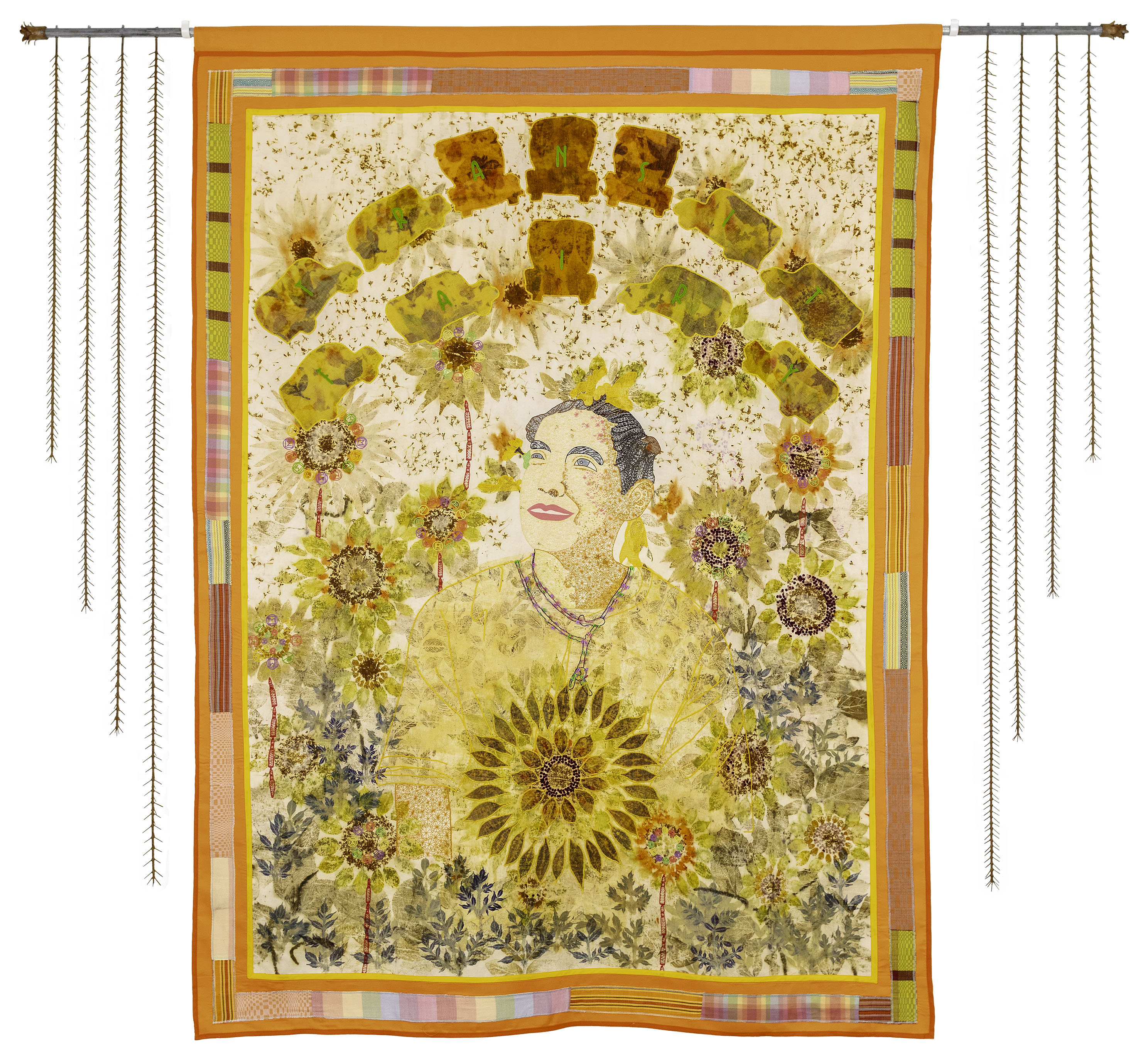

Yasue Maetake


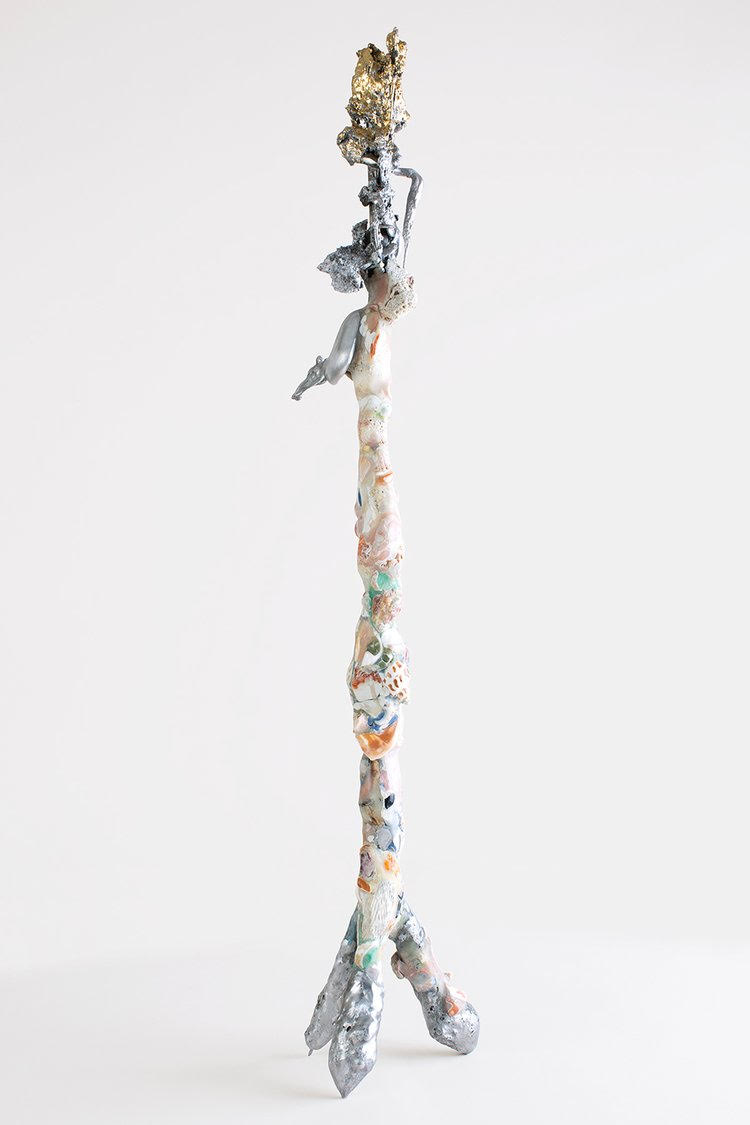


Citra Sasmita
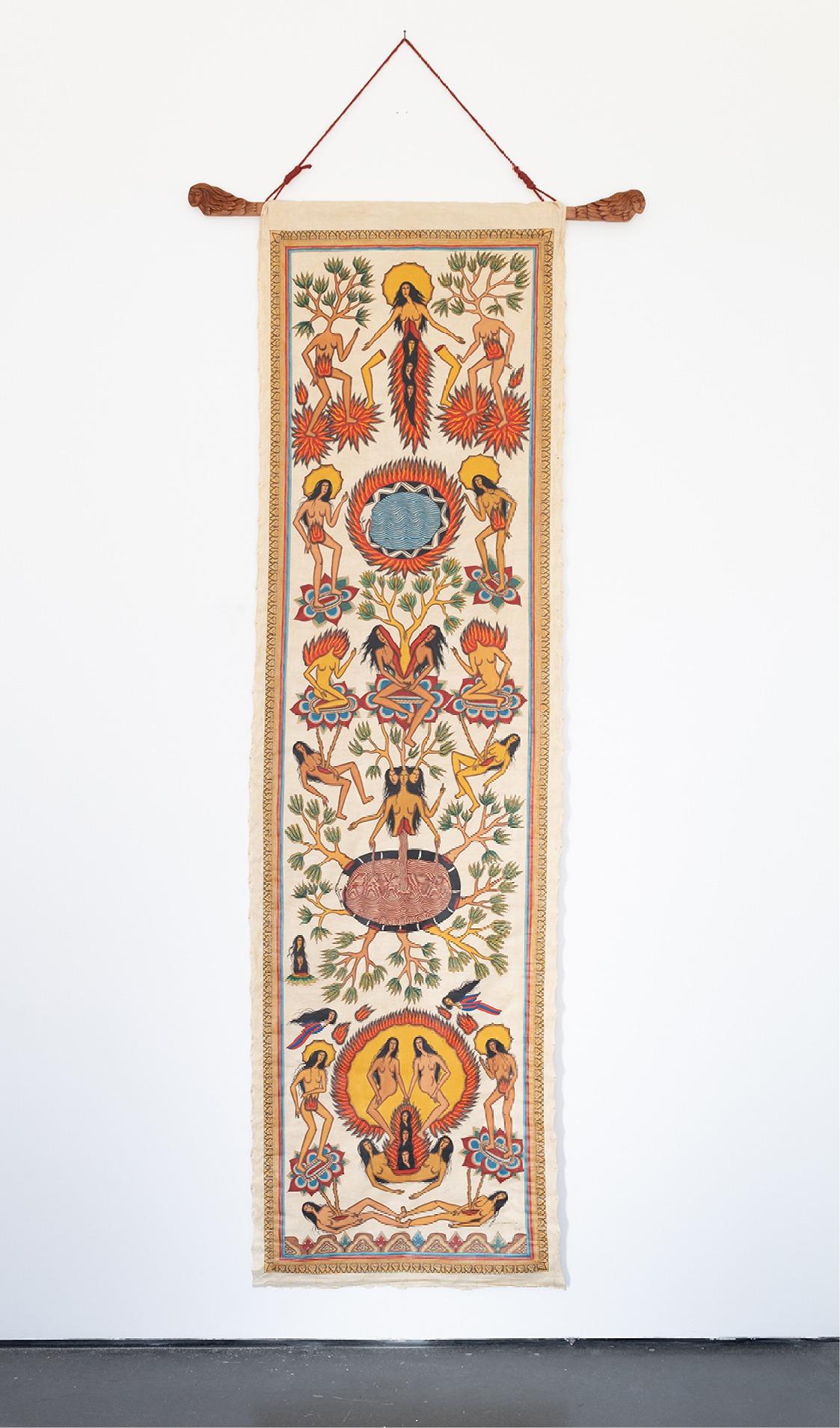
Eisa Jocson

Tosh Basco

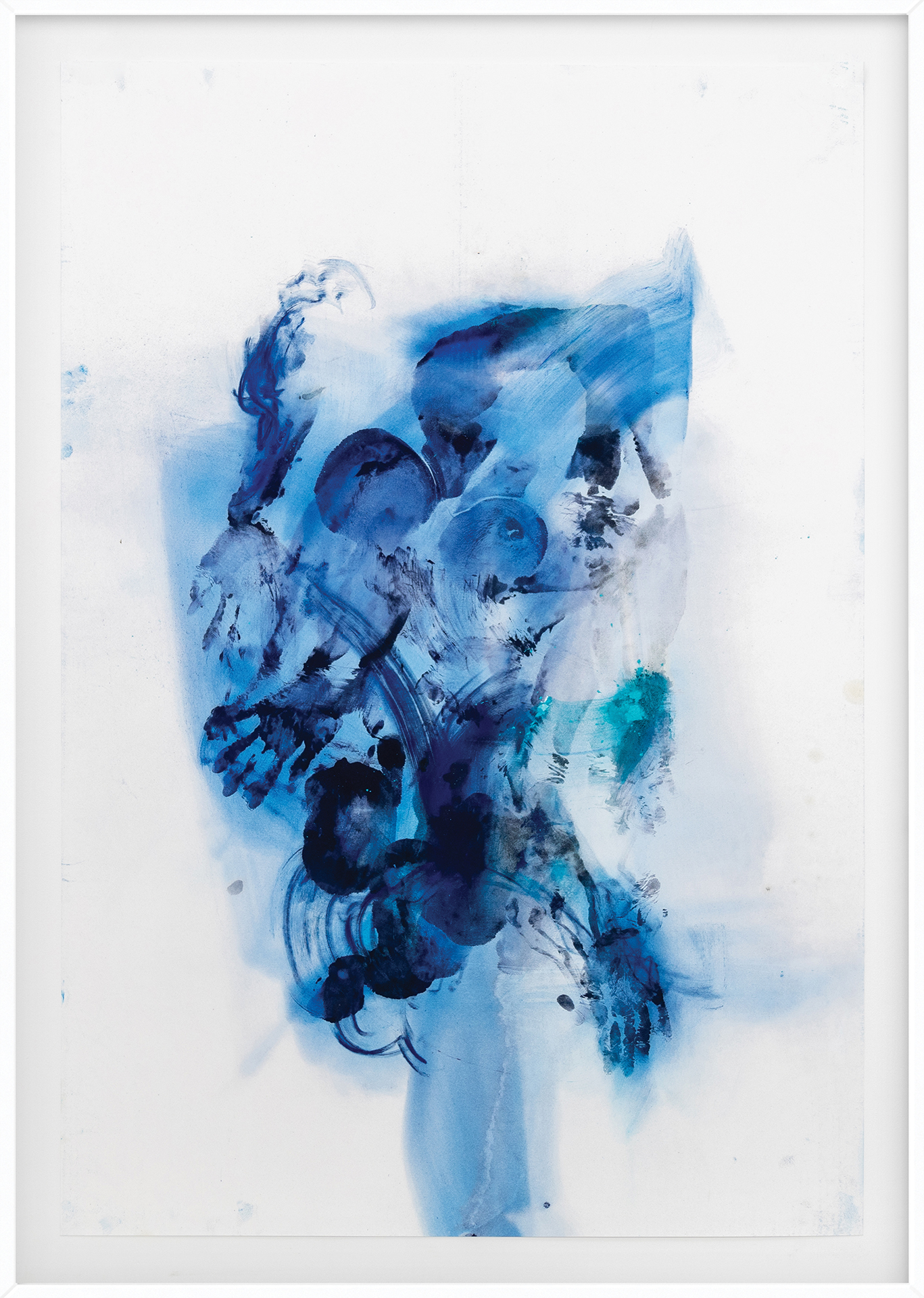

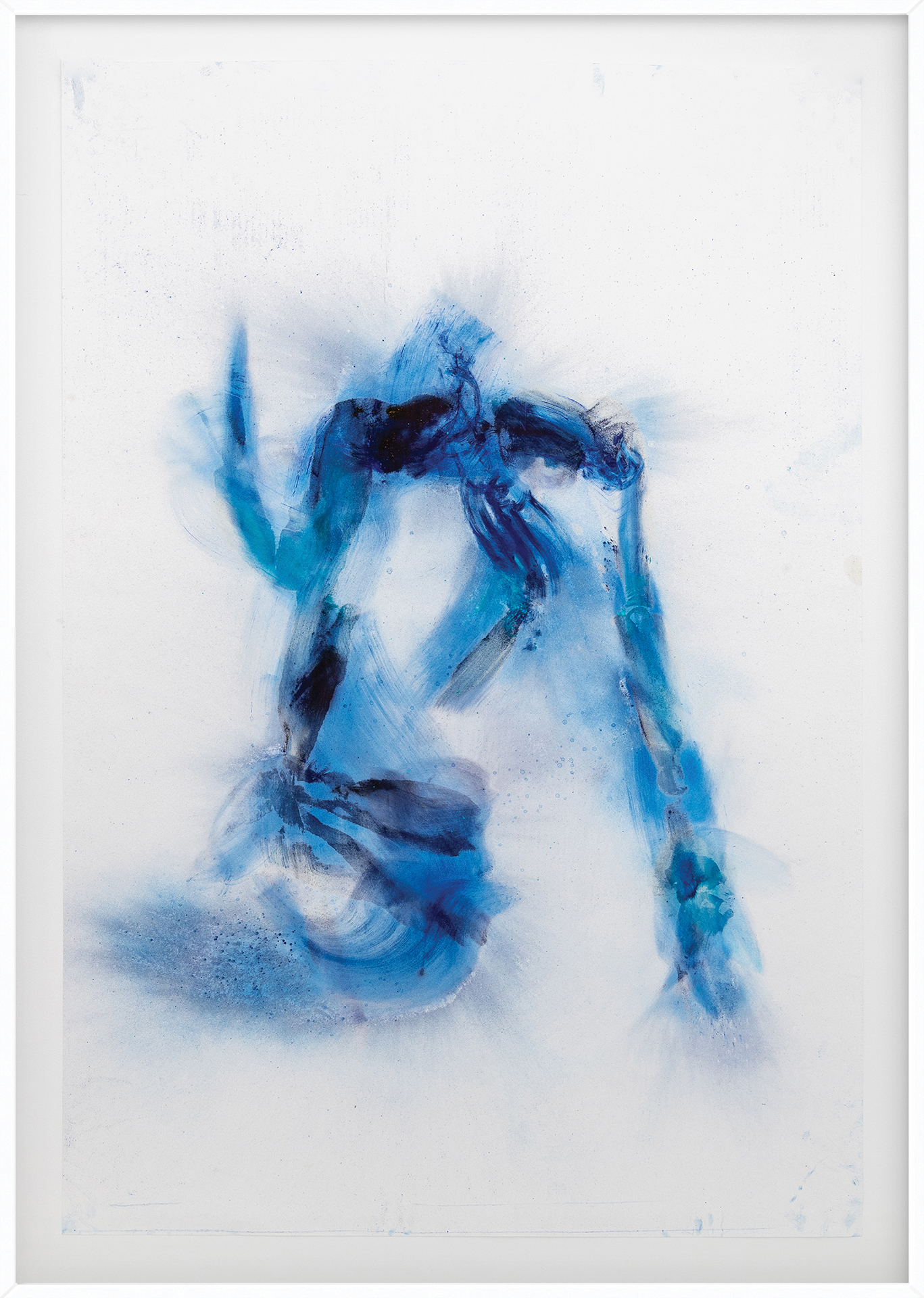
Ming Wong

